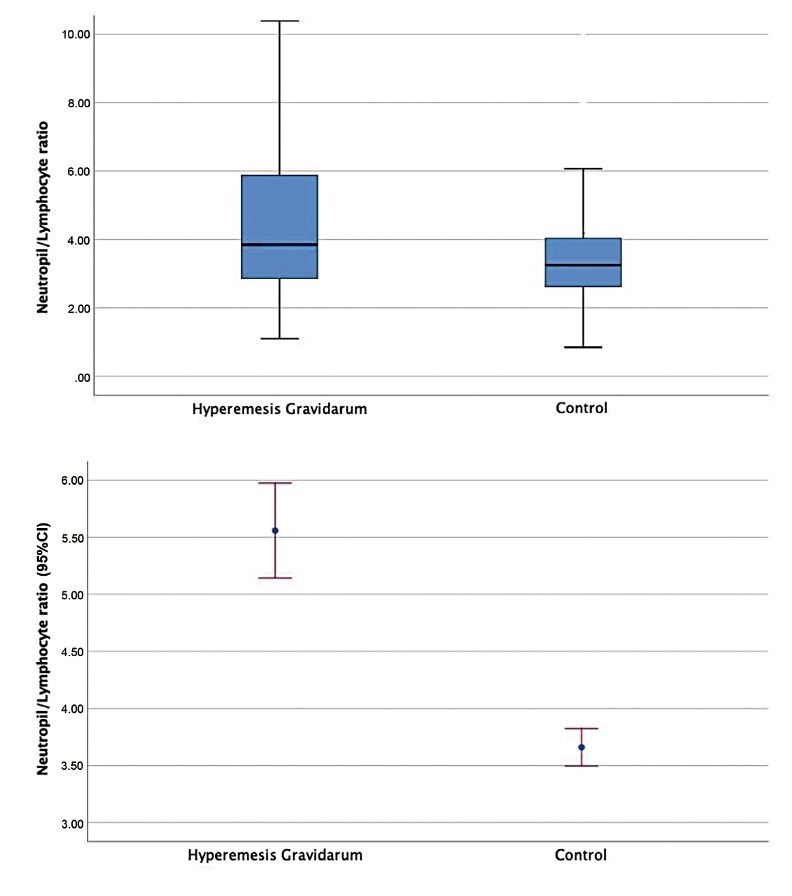
Hyperemesis gravidarum (HG) is a pregnancy complication that can progress with persistent nausea and vomiting. The aim of the present study is to evaluate the relationship between hematological parameters and HG.
A total of 532 pregnant women with HG who were admitted to the Department of Obstetrics and Gynecology between March 2019 and February 2021, and 534 healthy pregnant women with characteristics similar to those of the case group were included in the study. The hematological parameters of both groups were compared. In addition, the hematological parametersof patients with HG according to the severity of ketonuria were compared.
Themean age of the HG group (n=532) was 26.3 ± 4.1 years, and that of the control group (n=534) was 25.9 ± 4.8 years. Among patients with HG, 46% (n=249) had ketone(+), 33% (n=174), ketone(++), and 21% (n=109), ketone(+++). The neutrophil-to-lymphocyte ratio (NLR) and platelet-to-lymphocyte ratio (PLR) were higher in the HG group than in the control group: 3.8 (2.8-5.8)/3.2 (2.6-4.0); p<0.001; and 135.2 ± 30.4/108.9 ± 62.2; p<0.001 respectively. The neutrophil count, NLR, and PLR were higher in the group with ketone(+++) than in the groups with ketone(+) or ketone(++): 7.6 ± 1.9/5.5 ± 2.4; p<0.001; 3.8(2.8-4.6)/2.9(2.3- 3.6); p<0.001; and 149.9 ± 48.0/135.9 ± 65.7; p<0.001 respectively. The mean corpuscular hemoglobin (MCH) level, the NLR, and the PLR were identified as independent predictors of the presence of HG and the level of ketone positivity in HG patients.
The NLR and PLR were high in patients with HG, suggesting the its inflammatory activity. They may be important markers associated with the presence and severity of HG.
Search
Search in:


Comments